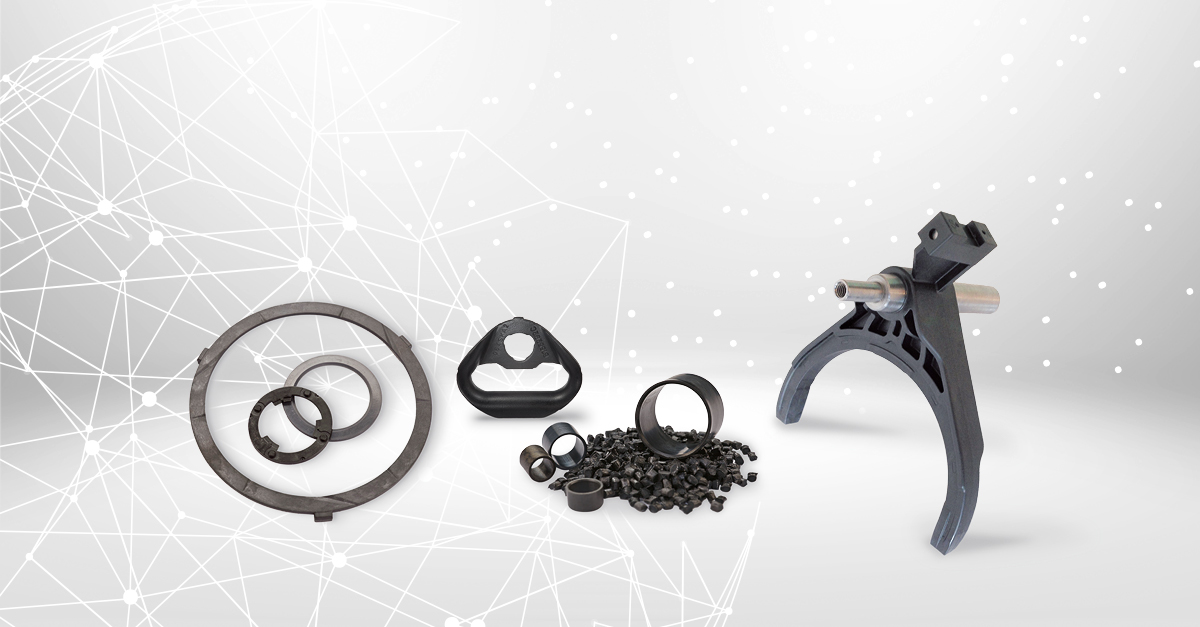Tribologically modified plastics. You should know these 5 facts

What is easy to speak, often difficult to understand, is thousands of years old and today more relevant than ever? The tribology! In a nutshell, this is about the theory of friction (from ancient Greek tribein, meaning to rub/wear off and lógos, here meaning teaching). In the truest sense of the word, everything here revolves around the topics of wear, lubrication and lots of physics, chemistry and mechanical engineering. But one by one. Here is a short introduction with the 5 most important facts:
Fact 1: Tribology already played an important role in the time of the pharaohs. Even if they did not know the term...
Pictorial traditions in the form of Egyptian reliefs from around 2,000 BC clearly show how workers lubricate skids or friction points with olive oil. The effects - for example when building monuments or transporting statues - were clearly noticeable for the legions of workers: reduced friction - reduced wear - easier work - faster transport (all of which are influencing factors that are still important a good 4,000 years later are).
Please also take a look at our white paper: Tribologically modified plastics. The basics and connections are presented in an easy-to-understand manner.
Fact 2: The technical term tribology was not coined until the wild 1960s. And the realization: This has consequences for the gross domestic product (GDP)!
In 1966, two tribology milestones occurred at the same time: First, the Englishman Peter Jost formulated the definition that is still valid today: "Tribology is the science and technology of interacting surfaces in relative motion and the associated practical processes." Conclusion: Dry, but precise.
Secondly, the Jost Report – a study on damage caused by wear commissioned by the English government in the 1960s – points out for the first time the extremely high costs of wear, corrosion and friction to the (British) economy. At the time, these were estimated at 1.1 to 1.4 percent of GDP.
Fact 3: Today, around one fifth of the world's energy consumption is caused by friction.
According to a study* from 2017:
- 23 percent of the world's energy consumption comes from tribological contacts (20 percent from friction and 3 percent from the reconditioning of worn components).
But the study goes even further:
In the future, using new technologies to reduce friction and protect against wear could reduce energy losses by:
- long-term (15 years) 40 percent and
- in the short term (8 years), 18 percent
In terms of reducing carbon dioxide (CO2) emissions, the study puts the savings potential through the use of advanced tribological technologies at up to:
- 1,460 million tons (short term) and
- 3,140 million tonnes of carbon dioxide equivalent long-term.
Converted into euros, these savings correspond to amounts of 450,000 million euros (short term) and 970,000 million euros in the long term.
Wouldn't you also be interested in getting a small piece of this "hundred thousand million pie"?
Fact 4: Plastics or polymers have a special place in tribology. Key word: “polymer tribology”.
Their friction/wear behavior, their material properties and, last but not least, the variety of their manufacturing processes allocate a special role to polymers compared to classic materials. The polymer tribology is therefore also defined by the modification - namely the modification of materials, manufacturing processes and constructions. Always with the goal of improving the frictional behavior: Either in the direction of high frictional resistance (as is required for brake pads on bicycles, for example) or in the direction of low frictional resistance (as is required for plain bearings, for example).
And this is exactly where the tribology expertise of LEHVOSS comes into play.
Fact 5: Polymer tribology means combining chemistry, physics and mechanical engineering..
As endless as the applications in which tribological systems play a role, the possibilities for specifically matching/compounding polymers are almost endless. For example, anyone who is commissioned with the construction of a machine - and wants to fully exploit the tribological performance or savings potential - needs a "custom made polymer". A compounder who has mastered the complexity of tribology as well as compounding the right polymer itself. In short: who has mastered the ABC of polymer modification from A for "additive" to Z for "addition of lubricants". One that has already gone a large part of tribology history and can also go any new path.
We at LEHVOSS can do that: Have the right plastic/polymer ready for every tribological application that “floats around in your head”. And if we don't have it in stock, we'll develop it for you. Very easily; at least for us.
* Kenneth Holmberg, Ali Erdemir: Influence of tribology on global energy consumption, costs and emissions.

